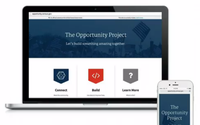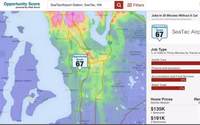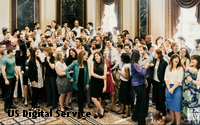 AUSTIN, TEXAS -- The Obama
Administration continued its call-to-action to the digital media technology community here this morning during a keynote presentation showcasing the innovation and long-term plans of the White
House’s U.S. Digital Service branch.
AUSTIN, TEXAS -- The Obama
Administration continued its call-to-action to the digital media technology community here this morning during a keynote presentation showcasing the innovation and long-term plans of the White
House’s U.S. Digital Service branch.
The service, which began in response to a request for help from the tech community to reboot the first, failed attempt at the Obama’s
healthcare.gov platform, has grown from a team of six private-sector volunteers to one of the largest departments inside the White House -- 140 people -- working on a wide range of initiatives to make
government services a better digital experience for their users, in this case, the U.S. citizenry.
The team -- drawn from some of the best and brightest digital startup thinkers and
from companies such as Google and Facebook -- has grown so large, said Haley Van Dyck, deputy admin of the service, that it has to set up shop in the basement of the White House.
advertisement
advertisement
“It’s like the cliche of building a startup in your parent’s garage,” she said, alluding that the spartan digs have reinforced the lean startup culture of fast,
iterative development that has enabled the launch of multiple new digital and “Big Data” experiences that are making the lives of needy Americans better at a fraction of the cost -- and
most importantly, turnaround time -- versus the previous bureaucratic way the federal government approached such solutions in the past.
Spouting Silicon Valley aphorisms like
“radical change” and “disruption,” Van Dyck said the result has been a “more awesome government for the people by the people today.”
She
contrasted the White House’s new startup culture by explaining a previous attempt by the General Accounting Office to put a system online a decade ago that led to a six-year, $1.2 billion
contract and “no functioning product was delivered.”
Instead of repeating that process, the digital service assembled a small team of six people -- about the same size as the team that relaunched healthcare.gov -- which created an
entirely paperless system enabling immigrants to apply for green card renewals online with one common application process. She said it took the team “six to eight months” to bring it to
market.
Other members of the digital service showcased examples in which similar small teams created simple, easy-to-use digital applications to transform the user experience of
Americans to research the benefits of a college education; access information about local police department policies and practices; find jobs, day care, transportation and affordable housing; and help
veterans research and obtain their benefits.
In the latter case, the team created one easy-to-access and use vets.gov Web site replacing the Veteran Administration’s confusing
array of 9,000 call centers and “1,000 Web sites, owned-and-operated by the government.”
One of the best examples of the service’s digital innovation was presented
by Aden Van Noppen, advisor to the U.S. CTO, Executive office of the President, who showed how the federal government was unlocking the Big Data troves it sits on from the Census Department to create
applications enabling better opportunities for citizens to get ahead.
One of the apps was the result of a “six-week software sprint” enabling users to create
opportunity.census.gov, which provides “opportunity scores” based on where they live and what access they have to resources -- jobs, food, health care, day care, housing, transportation,
education, etc. -- to improve their quality of life.
The approach, said Van Noppen, utilized the same concepts of SDKs (software development kits) and APIs (application protocol
interface) used by Silicon Valley developers to design, build and leverage data quickly. Only in this case, the data is one of America’s greatest and most common assets -- the Census.
She said the data and the interface’s visualizations are already being used by private citizens, community organizers, local, state and federal government people to improve the quality
of life for people in those communities.
Van Noppen noted that the tech startup culture is not new to the American spirit or its government and said it traces back to our founding
fathers, noting that both Benjamin Franklin and Thomas Jefferson were “techies” and that George Washington started the Army Corp of Engineers even before America had gained its
independence.
She said President Obama is simply carrying on that spirit by reaching out to the private sector to modernize the federal government and that the pre sentation, as well as President Obama’s
keynote here on Saturday, were just a part of that effort.
sentation, as well as President Obama’s
keynote here on Saturday, were just a part of that effort.
Interestingly, one of the service’s next big pushes in a new platform soon-to-be-launched by the Small Business Administration
that is explicitly designed to kickstart even more technology startups. The platform, dubbed “Startup In A Day,” is intended to streamline all the paperwork necessary for an American
citizen to launch a new business so that they can get all the approvals necessary in one day.